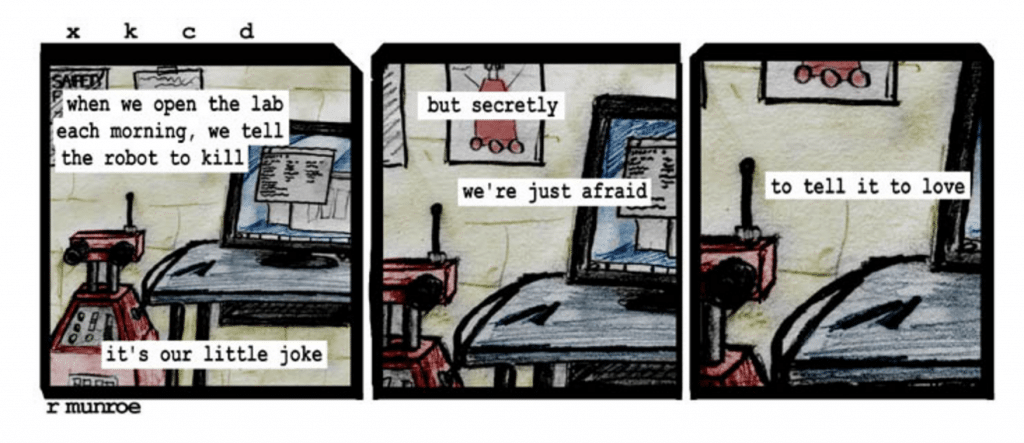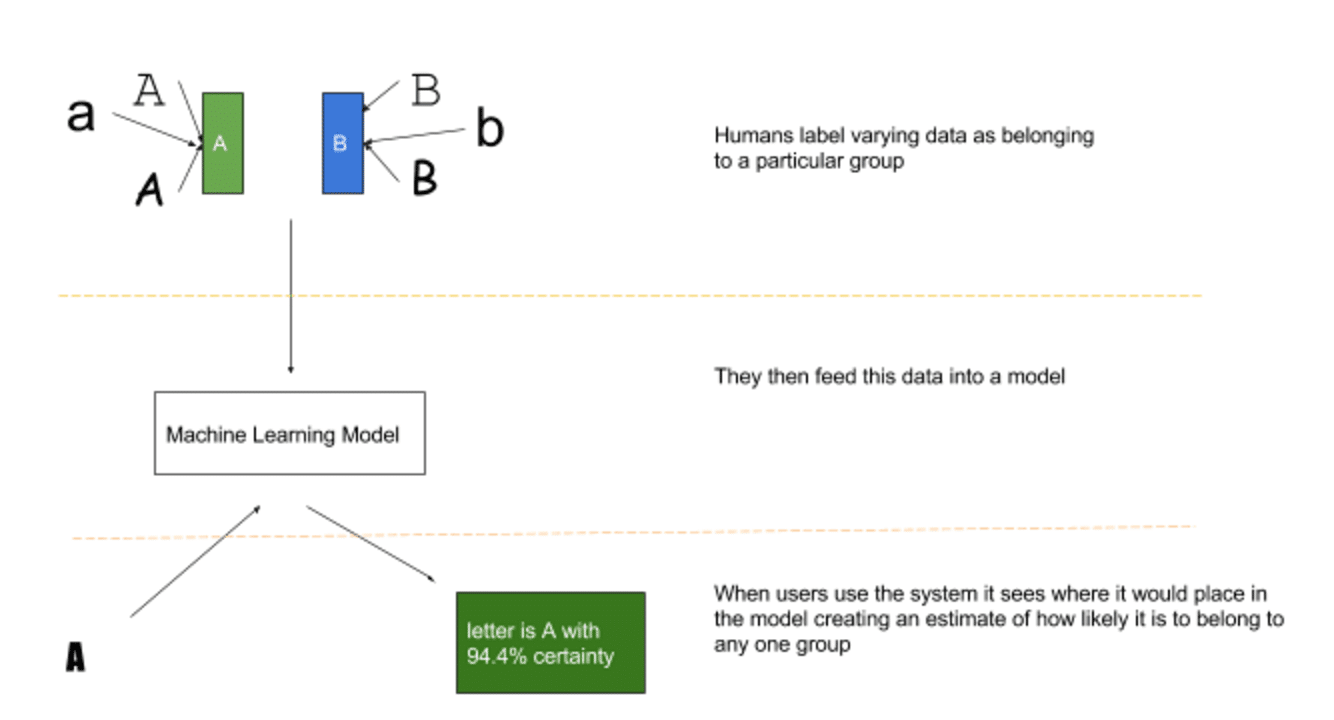This Article Was Written By A Machine

Webcomic by XKCD: http://xkcd.com/144/
Not really of course, but it begs the question: how close are we to that being a possibility? As machine learning continues to grow in popularity and usage, it can feel sometimes like we are on the cusp of an artificial intelligence (AI) revolution. But how does machine learning really work? What strides have we really made in AI over the years? Should we really be afraid of AI deciding humans aren’t necessary?
The most pervasive applications of AI in modern times are found in the field of machine learning – which has large historical ties to the field of statistics. Initial implementations of AI systems were naive and consisted mainly of manually coded pattern matches and conditionals. In contrast, machine learning is based on creating statistical models using large sets of data (images, handwriting, voice, etc.) annotated by humans. These data sets are then processed by a system that pinpoints the important features of the data and stores them in a model that can be used to make predictions on new data. This kind of machine learning is called “Supervised Learning” and it is the kind of machine learning that powers your phone’s text to speech feature, modern hand recognition, and almost all other major practical applications of AI in use today.

It’s important to note that almost all of the steps described above require high levels of human intervention:
- Humans need to tell the machines which features of incoming data are important enough to pay attention to.
- Humans manually tag and categorize massive sets of “training data” – where the correct answer is provided explicitly to the system.
- Finally, the machine learning algorithm can perform its function of predicting new data.
At least at this point the system will learn and improve its recognition over time right? Not on it’s own. In order to improve its predictions over time, machine learning systems must again rely on humans to let them know whether their predictions were good or not.

While machine learning is very useful in a variety of fields, it doesn’t leave any room for initiative. That is, machine learning algorithms at this point are purely limited to the problems and solutions we provide them, and can’t choose to take an unpredictable course. While we have gotten very good at enabling computers to pattern match and solve defined problems, we are no closer to enabling computers to come up with their own. That being said, it never hurts to be nice to your machine…
How Short Jazz with our own Joshua Hou on piano shot by Tech Ops intern Chloe Kuhar.



